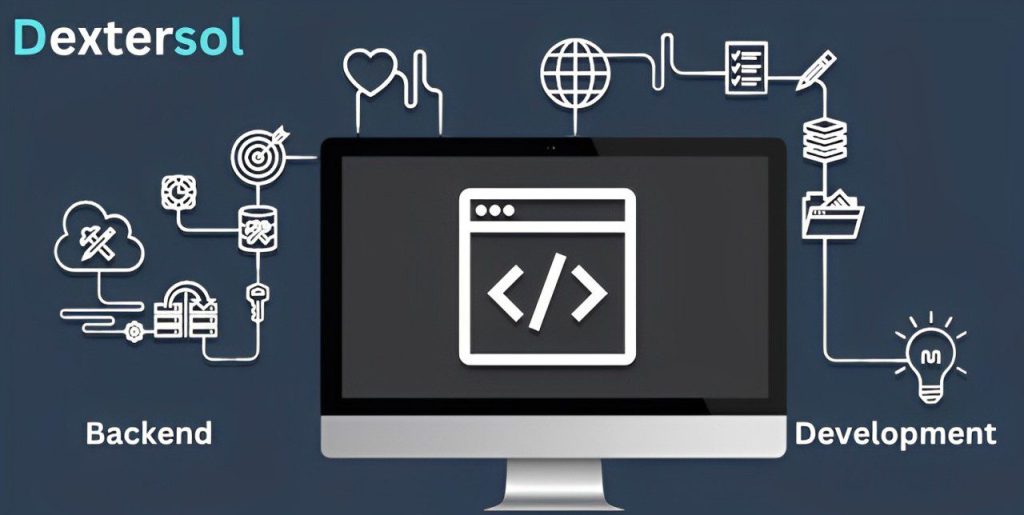
What is Backend Development?
Backend development implies designing and deploying server-side scripts, databases, and application programming interfaces on which an application relies. Its main operation concerns processes in the background so that the front end or the user interface can talk to the server and provide users with relevant information.
Step 1 : Backend Development Basics
Backend development, in turn, refers to the framework and mechanisms that help store and forward data to the front end. Some key components include:
Server
Backend computer or the server where backend code runs, such as Node.js Apache, etc.
Database
These sort of stores data in a relative schema (e.g., MySQL, MongoDB).
API (Application Programming Interface)
As a bridge between the former and the latter.
Server-side Programming Languages
Popular languages for the purpose are Python, Java, PHP, Ruby, and JavaScript when it is scripted through Node.js.
The backend checks and facilitates all requests from the front end, including user input in a website, to be executed correctly, and the right data is returned to the front end.
STEP 2 : How Backend Development Works
Backend development is a pre-programmed set of activities when a user engages with an application. For instance, when a user enters the username and password to a login form on a website, the frontend part of the website sends this data to the backend part through an API. After processing it with the stored information in the database, the backend receives this data and sends a reply like, ‘Access granted. ’ On the other hand, if the information provided does not match that in the database, it returns a message like ‘ERROR.’
This cycle continues over numerous operations, including fetching product information from an e-commerce website or sending push notifications on a social media platform. Relevant third-party APIs are also invoked by backend developers where applications require data from other services such as payments or weather. Each step also passionately assures that the application fully operates as intended without disappointing users.
Step 3 : Essential Skills for Backend Developers
Backend developers need to possess vast experience in programming knowledge in databases and problem-solving skills. They should have a good understanding of server-side languages, such as Python, Java or PHP – which is needed to write the code themselves for an application. Knowledge of database systems is also significant because a developer has to create, read, update and delete tables in MySQL or documents in MongoDB.
Managing and constructing APIs, such as RESTful or GraphQL services, is another important context since they ensure the data flow between the client and server. Understanding user authentication systems and security activities is critical in the avoidance of such threats as SQL injection or cross-site scripting (XSS). Moreover, to solve problems, original tools such as Git for version control, HTML & CSS for site building and responsive design, and knowledge in server management for deploying and hosting applications using AWS or Fire Base are useful.
Step 4 : Best Practices for Backend Development
Modular Code
Take code and divide it into retainable modules to increase code maintainability.
Error Handling
This should be done because error management is critical to system reliability improvement.
Security
Protect user data by validating and encrypting it and shielding it against things like XSS or SQL injection.
Database Optimization
There is less need for high-performance queries, and indexing should enhance performance.
Load Testing
Different strategies must be employed to test the backend systems and confirm their ability to perform optimally when the number of users accesses the site.
Documentation
API and code should be properly documented to ensure good collaboration and system maintenance among the developers.
Step 5 : Back End Developer Responsibilities
✦ Create and sustain code for the server side of a program to allow for simplicity of data management and communication between the front and back ends of an application.
✦ Create, develop and maintain databases with maximum storage and data accessing and updating functionalities.
✦ Talk about and use RESTful or GraphQL to enhance the interaction between clients and servers or interfaces and servers.
✦ APIs include third-party payment services, authentication systems or data sources outside the application.
✦ Use authentication to give the user the ability and right to access applications and implement the user’s sessions.
✦ Aided the testing team in maintaining and improving the scalability and performance at runtime under different loads.
✦ Find out all bugs and problems related to backend programming and the queries involved in the database.
✦ To ensure the code does not develop vulnerabilities that can cause errors, a high level of code quality is maintained through unit testing and debugging.
✦ Consult with front-end developers to ensure that the back end shall implement functionalities that match the look and feel.